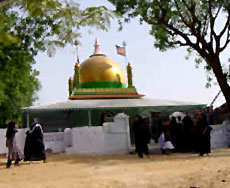In the district of Banaskantha of Gujarat state one can come across Kanodar, the name of a census town.
Due extensive surveys undertaken by the Indian experts few characteristics of this Kanodar town has been highlighted. Interestingly, there has been equal proportion of males and females in this town. Information about the status of children too can be deciphered from this Census report. In other words, 15 percent is the total percentage of children in Kanodar who belong to the age group of six years or even less than that. In numbers it comes to 1,600. It also has been pointed out that the people in Kanodar largely belong to the community of `Shia Muslims`.
Literacy rate has been taken as an important indicator to identify how much development has occurred in this Kanodar town. Since the average literacy rate of Kanodar is higher than that of the entire nation one can easily deduce that Kanodar is more or less a developed town. 74 percent is the actual measurement of the average literacy rate of Kanodar. India has had an average literacy rate of 59.5 percent. Not only that one can also derive the individual status of male and female literacy rates. Compare to female literacy, rate of male literacy is more constituting 69 percent of the total population. However male literacy constitutes as high as 80 percent. Naturally a handful of educational institutions have been flourished here in order to suffice to the requirements of the population of Kanodar. In almost all these schools, computer studies form an integral part.
 Handloom items and textiles dominate the economy of this Kanodar town. Developing the market of revamping jeeps is a recent phenomenon in Kanodar.
The chief attraction of Kanodar is the Husain Tekri . It has gained popularity for holding `Azadari programs`. Azadari programes have been feted on `22nd of Safar` , the 2nd month of `Islamic calendar`.
Handloom items and textiles dominate the economy of this Kanodar town. Developing the market of revamping jeeps is a recent phenomenon in Kanodar.
The chief attraction of Kanodar is the Husain Tekri . It has gained popularity for holding `Azadari programs`. Azadari programes have been feted on `22nd of Safar` , the 2nd month of `Islamic calendar`.
Access points are developed so that one can maintain connectivity with other places of India. Palanpur Junction Railway Station lies in vicinity. The nearest airport, located at Ahmedabad, caters to the needs of people.
In the district of Banaskantha agriculture is the occupation chosen by the populace for sustaining the needs of their day to day living. Diamond is one of the industrial products that are found here. Also there has been no paucity of `marble quarries` and copper in this district.



















